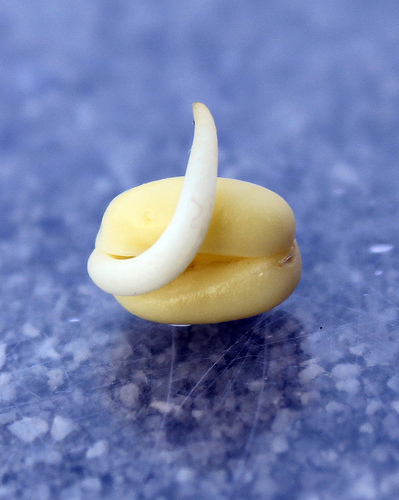Everyone needs more sprouts in their lives. Sprouts aren’t too easy to come by in restaurants and stores, so why not make it easy on yourself by growing sprouts in a jar at home? It’s an easy, fast and fun indoor gardening project!

Photo sourced via Creative Commons from Flickr user niels rosa
So, what the heck are sprouts anyway?
Sprouts are the freshly germinated baby plants that shoot forth from seeds. These same sprouts would grow to become vegetable plants and grains if you let them, but the point here is to eat them while they’re young. Eating them at this point allows you take in all of the energy and youthful vitality of the plant.
Why would I want to grow sprouts?
First of all, sprouts are incredible for your health. They’re packed with Vitamin C and protein, and they’ve been touted by nutritionists everywhere to be a super food. Scientists have found sprouts to have cancer-fighting agents and have been reported to reduce the risk of heart disease, stroke and high blood pressure. Some sprouts, like broccoli, are even more nutritious than their grownup counterparts!
Secondly, sprouts are incredibly easy to grow, take up practically no space, and it only takes a few days to get results. Unlike growing a full-fledged vegetable plant, sprouts are only grown until they’re about an inch tall. They require no soil and very little care. All you need is a couple of inches of countertop space and a minute of your time twice a day. If all gardening was this simple, everyone would be doing it!
What types of sprouts can I grow?
There are a wide variety of seeds and beans that can be sprouted and eaten. They all vary in tastes and textures. Most people have seen bean and alfalfa sprouts in the grocery store, but did you know you can sprout sunflower seeds and quinoa as well?

Photo Sourced via Creative Commons from flickr user RMT
Here’s a starter list of sprout-able seeds and beans:
- Clover
- Beet
- Pea
- Alfalfa
- Radish
- Sunflower
- Lentil
- Rye
- Soy
- Mung
- Quinoa
- Broccoli
How do I go about growing sprouts?
The very first and most important thing to cover is where to get seeds and beans for sprouting. It is of the utmost importance that you purchase seeds and beans that are specifically labeled as being meant for sprouting. Your average seeds and beans from garden centers and grocery stores could be covered in pesticides, fungicides, growth inhibitors and other nasty chemicals that are dangerous to ingest.
Due to the fact that you’re using warmth and moisture to sprout, there is an increased risk of Salmonella and E. Coli forming. Using beans and seeds that are specifically labeled to be used for sprouting significantly decreases that risk because they have been cleaned.

Photo Sourced via Creative Commons from Flickr user Cowbite
How to grow sprouts in a jar
Step 1:
Scoop out a few tablespoons of seeds and thoroughly rinse them. Place in a bowl and cover them with warm water, then let them sit overnight.
Step 2:
The next day, your beans or seeds will have soaked up some of the water. Drain the water and rinse the seeds again.
Step 3:
With very clean hands place the seeds/beans in the bottom of a clean wide-mouthed jar. Make sure they lay down in one smooth layer and are not stacked on top of each other. They need air circulation.
Step 4:
Cover the top of the jar with cheesecloth and secure it with the ring from the lid, or a rubber band.
Step 5:
Rinse the seeds/beans 2-3 times a day and make sure to drain as much excess water out as possible. The water can be poured right out of the cheesecloth.
Repeat Step 5 every day until your sprouts are as big as you’d like for them to be, then it’s time to eat!
Sprouts can be added to sandwiches, salads, stir-fries or dips and can be refrigerated for 1-2 weeks.
Note: The key to making sprouts safe to eat is to have as clean an operation as possible. Wash hands and instruments well whenever handling the sprouts, and always rinse the sprouts 2-3 times per day. If you forget to rinse and the sprouts get slimy, moldy, or smelly, throw them away and start again.

Share tips, start a discussion or ask one of our experts or other students a question.
No Responses to “Get Your Fill of Baby Plants by Growing Sprouts at Home”